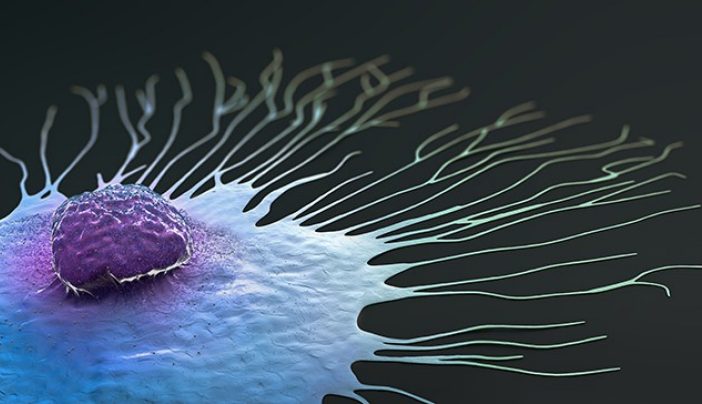
As part of a complete breast cancer diagnosis, patients will learn their HER2 status. The human growth receptor 2 – or HER2 – is something each of us has. It tells cells when to grow and when to stop growing.
When it comes to cancer, too much HER2 can make cells grow out of control, leading to a more aggressive disease. But what happens when the opposite is true?
Naoto Ueno, M.D., Ph.D., is leading groundbreaking research in HER2 low breast cancer, a new subtype designation for which the Food and Drug Administration (FDA) recently approved the first treatment targeting low levels of HER2.
He explains what it means to have HER2 low breast cancer and how creating more precise diagnoses can lead to more effective treatments for patients.
How is HER2 status classified?
After an initial breast cancer diagnosis, tissue from the tumor will be sent for special testing called an immunohistochemistry test (IHC). This test will show how much HER2 is on the surface of the cancer cell.
If the IHC score is more than three, the tumor is HER2 positive. For years, any score lower than three was considered HER2 negative. Now, thanks to more detailed testing, there’s a name for HER2 levels between 1-2: HER2 low.
A score of zero is called HER2 negative.
Sometimes, additional testing is necessary to confirm HER2 status. Fluorescence in situ hybridization (FISH) is a pathology technique that looks at the gene that encodes HER2 to see how many copies are present. Results will either be positive or negative.
Once the classification is complete, your care team can recommend the most precise treatment plan for you.
Trastuzumab deruxtecan expands treatment options
For patients with newly diagnosed disease that hasn’t spread, the standard treatment is either chemotherapy, endocrine therapy or immunotherapy.
Until recently, there was no treatment option specifically for metastatic patients with HER2 low breast cancer. Instead, they’d receive the standard treatment option depending on their breast cancer prognosis.
In a clinical trial called DESTINY-004, trastuzumab deruxtecan (brand name Enhertu) proved to be more successful than clinical trial leaders expected. Now we have a new way to target HER2 low, and patients have choices when it comes to their breast cancer treatment.
Advice for HER2 low breast cancer patients
Before trastuzumab deruxtecan, breast cancers were either considered HER2 positive or HER2 negative. But we now know that 50% to 60% of breast cancer diagnoses are classified as HER2 low. The addition of this targeted therapy makes it even more important for patients to seek care from a center of excellence like MD Anderson that can perform precise testing.
There’s also research underway to determine whether HER2 status changes over time. For instance, if a patient is HER2 low when they’re diagnosed, could they become HER2 positive after a few years?
If you have metastatic cancer or are experiencing a recurrence, ask your care team if you should be retested to verify HER2 status.
What’s next in understanding HER2 and breast cancer
Now that we have specific treatments targeting HER2 low and HER2 positive breast cancers, we’re working to better classify HER2 negative disease to see if that classification can benefit from targeted therapy like trastuzumab deruxtecan.
The more we learn about the unique features of each diagnosis, the better able we’ll be to create more personalized treatment plans for our patients.
Request an appointment at MD Anderson online or by calling 1-877-632-6789.
"low" - Google News
September 09, 2022 at 09:49PM
https://ift.tt/Y5MbVEi
What is HER2 low breast cancer? - MD Anderson Cancer Center
"low" - Google News
https://ift.tt/Ma53Iiu
Bagikan Berita Ini














0 Response to "What is HER2 low breast cancer? - MD Anderson Cancer Center"
Post a Comment